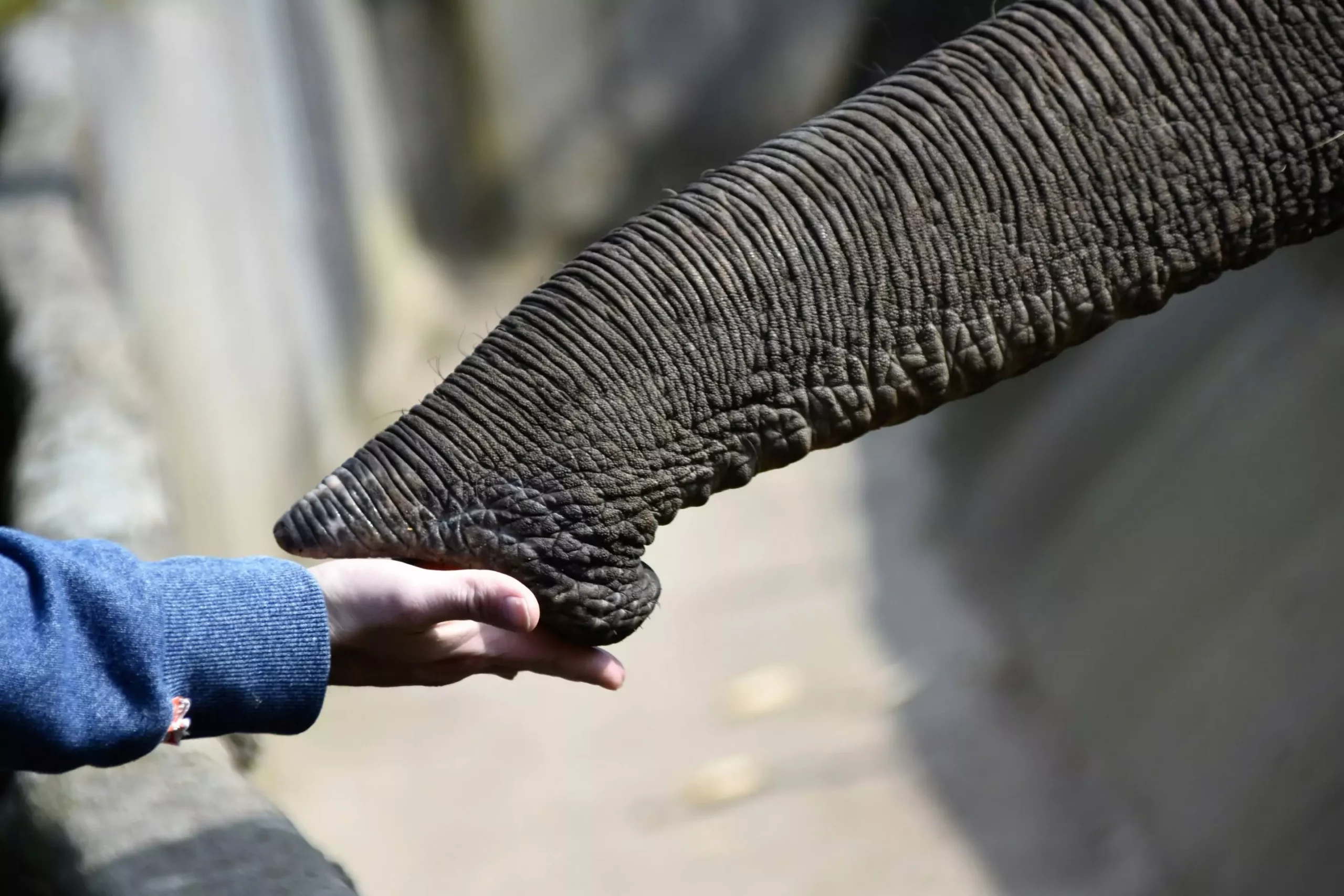Elephants are fascinating creatures with incredible abilities, one of which is their versatile trunk. The trunk of an elephant is not just a tool for eating and drinking, but it serves a multitude of purposes, including communication, exploration, and social behavior. This trunk, made up of six muscle groups, is incredibly strong, capable of uprooting trees, yet it can also be used with remarkable precision. Elephants employ various techniques to grasp objects, such as suction, pinching with the two “fingers” at the tip of the trunk, and wrapping the trunk around the object.
Researcher Pauline Costes and her team conducted a study on the pinch force exerted by the tip of the trunks of African savannah elephants. Unlike previous studies that focused on the force exerted by the entire trunk when wrapping around an object, this research specifically looked at the force at the trunk tip. The tip of an elephant’s trunk comprises two finger-like protuberances, with one being pointy and the other more rounded. The study also examined how the position of the trunk affected the force exerted.
The findings of this research have significant implications for the field of robotics, particularly in the development of soft grippers inspired by the elephant’s trunk. Soft robotics, which utilize flexible and deformable materials, can benefit greatly from understanding how the elephant’s trunk can grasp objects with precision but without excessive force. The research revealed a maximum pinch force of 86.4 Newton, surpassing the pinch force between the thumb and index finger in humans. This information is crucial for the future design and development of soft grippers for robots.
Electronic engineers have long been inspired by natural biological tissues in designing robots that can twist and turn to perform various tasks. The elephant’s trunk, with its flexibility and precision, has been a particularly enticing subject for bio-inspired technology research. By studying the unique abilities of the elephant’s trunk, researchers aim to enhance the grasping and manipulation capabilities of robots. Soft grippers based on the trunk can adapt to cluttered and unpredictable environments by reshaping their bodies to fit the objects they interact with.
The potential applications of soft robots are vast and varied. From minimally invasive surgical procedures in medicine to handling fragile objects on production lines in the industry, soft robots can revolutionize numerous fields. Additionally, robots capable of navigating difficult environments, harvesting delicate fruits in agriculture, and conducting research and exploration in challenging terrains can all benefit from the advancements in soft robotics technology.
Beyond robotics, the research on elephant trunk strength also has implications for elephant conservation. Understanding how elephants interact with their environment and how climate change may impact their feeding behavior can aid conservation efforts. By studying the different grasping techniques of elephants in various habitats, researchers can better protect these magnificent animals and their ecosystems.
The incredible abilities of elephants and their trunk serve as a source of inspiration for technological advancements in robotics. By unlocking the secrets of the elephant’s trunk, researchers are paving the way for innovative soft grippers that can revolutionize various industries. Furthermore, the insights gained from studying elephant behavior can contribute to conservation efforts and enhance our understanding of these majestic creatures.


Leave a Reply